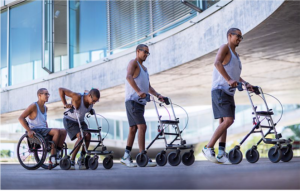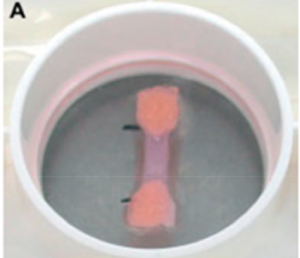The ability to walk again
A breakthrough in medical technology has allowed former paralyzed people with spinal cord injuries to walk again! This injury can occur to anyone and it’s all because researches in Switzerland developed electrical stimulation technologyin 2018. This point of this technology was to restore movement in all patients tested. In addition to this, electrical stimulation has the potential to eliminate the 12,500 spinal cord injuries happening each year; however, only three patients were tested. The patients paralyzed from the waist down for years from injuries had minimal to no movement in their legs, and could not walk. Now, after five months of therapy and electrical stimulation, patients can walk for one hour before exhaustion and voluntarily move their legs, being a big leap from being able to walk with crutches after a week-long of treatment with electrical stimulation. For example, David Mzee, one of the patients who broke his neck and whose legs were paralyzed after, is now miraculously cured.
How does electrical stimulation restore movement?
The method, called epidural electrical stimulation, uses precise electrical stimulations that allow motor (movement) signals to travel to the brain from the injured areas. Epidural electrical stimulation is important to remove paralysis that is associated with spinal cord injury. This is because motor signal neuron connections are severed, which transmit electrical information between the spine and brain to create mechanical energy, like moving a muscle. As well, electrical stimulation allows the neurons to send stronger electrical signals so that the brain can receive them and allow movement. The electrical stimulators in this case of the three patients were implanted in the injured legs and with the help of a program researchers developed, they could stimulate the spinal cord at the right time to facilitate movement. That is why after five months of stimulation use, the patients could still move, because the stimulation was making the neuron connections stronger.
The video below shows the progression of not being able to walk freely in one of the patients

limitations of the Swiss electrical stimulation technology
The electrical stimulation technology is in the early stages of development and researches are still unsure if it can work on every patient with spinal cord injuries in order to restore movement. Also, the technology doesn’t allow patients to regain motion immediately, and they have to force themselves to move with the help of therapy. Considering this, the three patients already had some movement at their injuries before electrical stimulation treatment because of pre existing neural connections, while many other paralyzed people have no movement because there are no neuronal connections between the spinal cord and the brain. However, the technology shows that there is hope and reason to continue researching and developing ways to restore movement in all paralyzed people.
written by: Brian Agafitei



 (
(